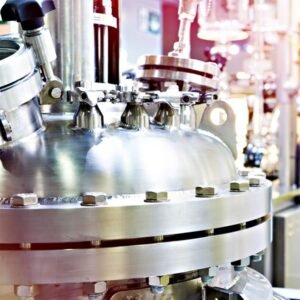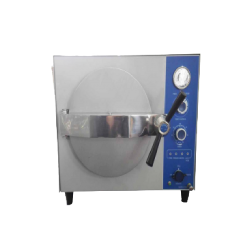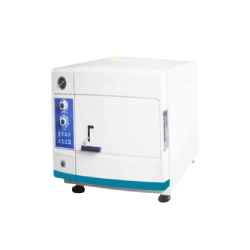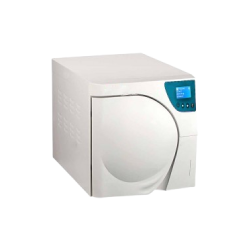
Our autoclaves seamlessly integrate technology, reliability, and efficiency to safeguard your valuable equipment and materials. Crafted from premium stainless steel, our autoclaves are engineered for the impeccable sterilization of liquid media, cultures, medical tools, and glassware, prioritizing precision and safety.
Benefit from swift cycle times and efficient heating mechanisms that not only ensure optimal performance but also optimize energy usage. Our diverse range includes tabletop autoclaves, vertical autoclaves, horizontal autoclaves, and specialized medical autoclaves.
Experience seamless operation, exceptional sterilization, and user-friendly interfaces that prioritize convenience without compromising on quality. Trust in our autoclaves to deliver the perfect blend of cutting-edge technology and robust design, setting the standard for safety and efficiency in sterilization processes.

Customer Reviews
Frequently Ask Questions
How should I select the appropriate autoclave?
Selecting the ideal autoclave machine is more complex than it initially seems. Numerous factors must be taken into account, including application suitability, throughput requirements, capacity, installation constraints, essential features, optional features, and, naturally, budget considerations.
As a manufacturer of a wide range of autoclaves, we offer impartial guidance on the type that would best fulfill your requirements. We are available to visit you at your convenience. Please contact us via email for further assistance.
What is the recommended inspection frequency for a pressure vessel?
Generally, autoclaves should undergo internal cleaning weekly. Prompt removal of loose items like paper or broken glass is crucial to prevent them from entering the pipework, potentially causing blockages or damage. Regularly inspect and clean the door seal, and wipe load probes and water level sensors as part of routine maintenance.
Autoclaves equipped with manual fill and in-chamber heating demand more frequent maintenance. It’s advisable to replace the water weekly and ensure the reservoir is free of any debris. Neglecting these tasks can compromise the autoclave’s reliability over time.
What type of water quality is recommended for use in my autoclave?
Water quality is critical for autoclaves. Customers must inform us about the on-site water quality. We recommend using potable water with a water hardness of less than 50 ppm CaCO2. If the water hardness exceeds this level, water treatment such as a water softener or conditioner will be necessary, depending on the type of autoclave in use.
Some water sources may also contain dissolved solids and organics, which can accumulate sediment over time, particularly in closed systems like steam generators. Such water sources require additional filtration. Neglecting this can compromise the reliability of the autoclave.
RO (Reverse Osmosis), deionized, and demineralized water should not be used unless approved after consultation. Often, modifications to the autoclave are required to accommodate these water types.
Is it possible to upgrade my current autoclave?
Yes, it is possible, but several factors need evaluation to determine if an upgrade is cost-effective. We’re available to discuss your needs and can arrange a site visit for a thorough assessment.
Does overloading an autoclave impact its performance?
Overloading an autoclave can significantly impact its performance. It affects heaters, reservoirs, and generators. Adequate space around loads is crucial for air to escape and steam to penetrate effectively. Overloading can deplete reservoirs, causing damage to heaters, and can overburden steam generators, resulting in reliability issues. Moreover, it hinders effective air removal and steam penetration, potentially leaving parts of the load non-sterile after the cycle completes.
How does air ballast enhance a fluid cycle?
Air ballast serves as a valuable feature during the processing of fluids like media. This process involves a slow cooling phase that significantly extends the cycle duration. Rapid cooling risks both volume loss and potential chamber damage due to differential cooling rates between the chamber and the fluids. Air ballast maintains a steady over-pressure inside the chamber during cooling. This prevents volume loss within the load, facilitates safer and quicker cooling, and ultimately reduces the total cycle time.
What materials are suitable for sterilization using a laboratory autoclave?
Depending on the model, laboratory autoclaves can sterilize a diverse range of items, such as solid and liquid media, metal instruments, glass containers, animal cage bedding, biohazardous materials, soil samples, and red bag waste.
How can I maintain optimal operational condition for my autoclave?
Generally, it’s recommended to clean the interior of autoclaves weekly. Immediately remove any loose items like paper or broken glass to prevent them from causing blockages or damage to the pipework. Regularly inspect the condition of the door seal and ensure load probes and water level sensors are wiped clean as part of routine maintenance.
Autoclaves equipped with manual fill and in-chamber heating require more frequent maintenance. Water should be replaced weekly, and any debris should be cleared from the reservoir regularly. Neglecting these tasks can gradually impact the autoclave’s reliability over time.
Laboratory Autoclave : Table Top Autoclave, Vertical Autoclave, Horizontal Autoclave, Medical Autoclave, Portable Autoclave, Plasma Autoclave, Shedding Autoclave, Ethylene Oxide Sterilizer.
Quick Links : Laboratory Autoclave, All Autoclaves, About us, Contact us.























































